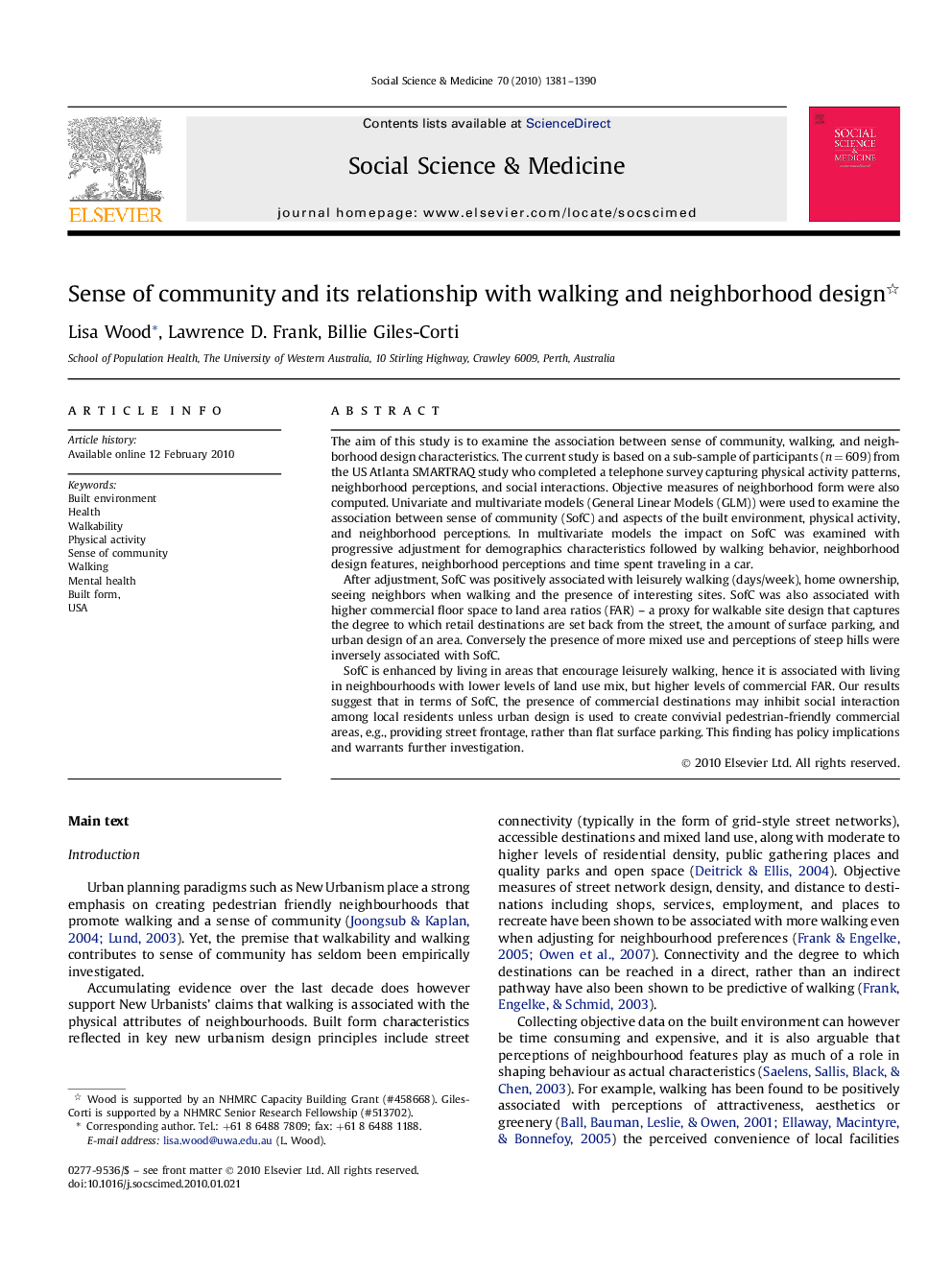| کد مقاله | کد نشریه | سال انتشار | مقاله انگلیسی | نسخه تمام متن |
|---|---|---|---|---|
| 953116 | 927566 | 2010 | 10 صفحه PDF | دانلود رایگان |

The aim of this study is to examine the association between sense of community, walking, and neighborhood design characteristics. The current study is based on a sub-sample of participants (n = 609) from the US Atlanta SMARTRAQ study who completed a telephone survey capturing physical activity patterns, neighborhood perceptions, and social interactions. Objective measures of neighborhood form were also computed. Univariate and multivariate models (General Linear Models (GLM)) were used to examine the association between sense of community (SofC) and aspects of the built environment, physical activity, and neighborhood perceptions. In multivariate models the impact on SofC was examined with progressive adjustment for demographics characteristics followed by walking behavior, neighborhood design features, neighborhood perceptions and time spent traveling in a car.After adjustment, SofC was positively associated with leisurely walking (days/week), home ownership, seeing neighbors when walking and the presence of interesting sites. SofC was also associated with higher commercial floor space to land area ratios (FAR) – a proxy for walkable site design that captures the degree to which retail destinations are set back from the street, the amount of surface parking, and urban design of an area. Conversely the presence of more mixed use and perceptions of steep hills were inversely associated with SofC.SofC is enhanced by living in areas that encourage leisurely walking, hence it is associated with living in neighbourhoods with lower levels of land use mix, but higher levels of commercial FAR. Our results suggest that in terms of SofC, the presence of commercial destinations may inhibit social interaction among local residents unless urban design is used to create convivial pedestrian-friendly commercial areas, e.g., providing street frontage, rather than flat surface parking. This finding has policy implications and warrants further investigation.
Journal: Social Science & Medicine - Volume 70, Issue 9, May 2010, Pages 1381–1390